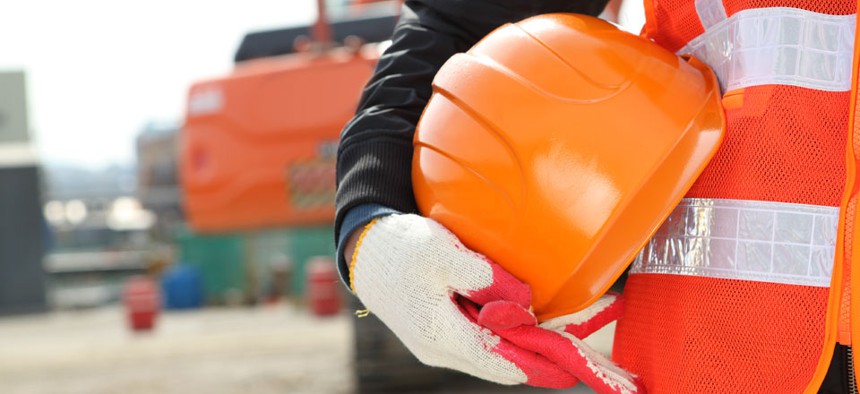
ndoeljindoel/Shutterstock.com
Beware: Mistakes and Workplace Injuries Spike After Switch to Daylight Savings Time
The average American gets about 40 minutes less sleep the night after pushing the clock ahead an hour—with measurable consequences for on-the-job safety.
Are you feeling a bit sleepy at work today?
If so, you're far from the only one. In fact, the Monday following the switch to Daylight Saving Time ranks among the days when Americans are the most under-rested: On average, Americans sleep for 40 minutes less the Sunday night following "springing forward."
And that has serious consequences for workplace safety: A 2009 study in the Journal of Applied Psychology examined 576,292 mining injuries that were sustained in the years from 1983 to 2006. On the average Monday, Christopher M. Barnes and David T. Wagner of Michigan State found, coal miners reported an average of about 63 on-the-job injuries. But on the Monday following the switch to DST, the number increased by 3.6 injuries, or 5.7 percent. To make matters worse, Barnes and Wagner also found that the severity of the injuries increased: The number of days missed due to an injury on the post-DST Monday rose by 67.6 percent compared with average workplace injuries.
Previous research has shown that fatigue can lead to inattentiveness and, ultimately, mistakes. A 2004 study of 400 U.S. Army motor-vehicle collisions found a correlation "between insufficient sleep and driver-at-fault accident." A 2008 National Transportation and Safety Board report "noted that train crew fatigue resulted in the failure of the engineer and conductor to appropriately respond to wayside signals governing the movement of their train, resulting in three deaths and $5.85 million in damages."
Interestingly, Barnes and Wagner found no compensatory phenomenon in the autumn, when we set time ahead and gain an hour. Unlike in the instance of spring, the autumn change had a relatively small effect on how much sleep people got: just 12 extra minutes—not enough to make any noticeable difference in workplace safety.
The reason for this, the authors say, has to do with how our internal clocks interact with our technological ones. It's harder, they explain, to force yourself to fall asleep earlier than usual than it is to force yourself to stay up for a bit longer. So in the springtime, when the clocks move ahead, people don't fall asleep at their normal bedtimes (say, 11pm)—they aren't tired yet. So they stay up until their bodies are ready for bed, sometime a bit before midnight, and then when the alarm goes off at, say, 7, they've gotten less sleep. In the fall, in contrast, they'll get tired around 10, push themselves to stay awake until their normal bedtime (11), and then wake up at 7, leaving their number of hours slept more or less the same.
Other studies have shown that the Monday after the switch to Daylight Saving Time is also a rough time on the roads, with an increased risk of car accidents. However, it is unclear whether this change comes from fatigue or from the changes in lighting that result from everyone commuting an hour later. Because their study focuses on coal mining, where natural lighting conditions are less relevant, the authors believe that they've isolated the effect of fatigue and are not mistakenly measuring sunlight.
And why were the injuries they tracked not only more common, but also more serious? That's a bit unclear. Barnes and Wagner theorize that it might have something to do with how workplaces attempt to protect workers from the most devastating sorts of injuries—and the ineffectiveness of those measure in the face of fatigue. The authors explain:
Workplace hazards that are highly dangerous are more likely to be protected by multiple safeguards (e.g. multiple keys and switches that must be initiated to start a large and potentially dangerous piece of machinery), whereas smaller hazards might be protected by fewer safeguards (e.g. yellow paint on a doorway with low clearance). Therefore employees must miss multiple cues to be harmed by highly dangerous workplace hazards, whereas less dangerous hazards, related to less severe injuries, might be encountered by missing only one cue.
In a nutshell: All types of injuries may be more likely when you're tired, but the worst ones are very hard to do unless you're quite zonked.
The authors say that sleep deprivation tends to be studied in the extreme—clinical experiments in which subjects are prevented from sleeping for hours and hours on end. "The extremity of these studies belies the power that even small restrictions of sleep can have on employees," they write. Looking at the effects of changing the clocks—which results in a subtle but surely more common degree of sleep loss—can help managers and researchers understand the consequences of even mild fatigue.
To combat the risks, Barnes and Wagner have a few suggestions: For workplaces with hazardous work, perhaps it'd be best to schedule the worst of it for later in the week, once workers have had a chance to adjust. Alternatively, work schedules could be adjusted gradually—so, for example, workers could start 45 minutes later the first two days, then shift their hours back until they are once again aligned with the clocks.
But even those measures won't help what are surely the implications of the researchers' findings: Fatigue on any day means greater risk for workers. It just happens that it's on the day when everyone is tired together that we can see, statistically, the consequences.
(Image via ndoeljindoel/Shutterstock.com)






